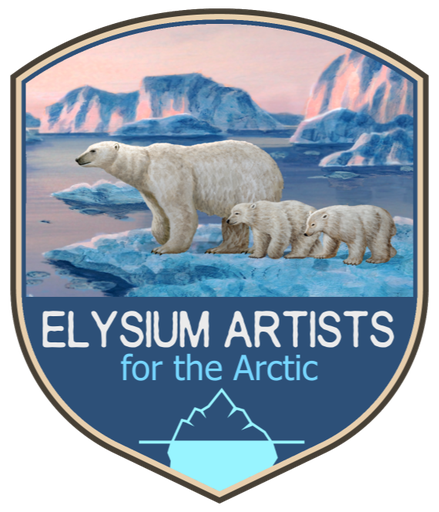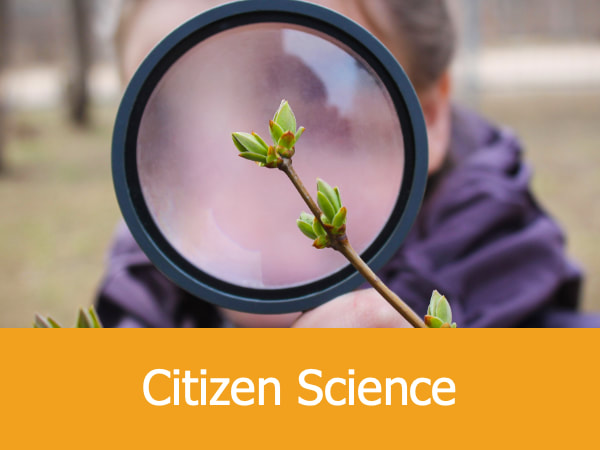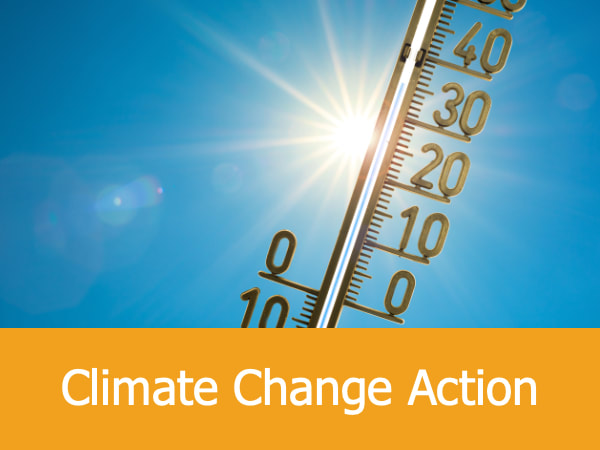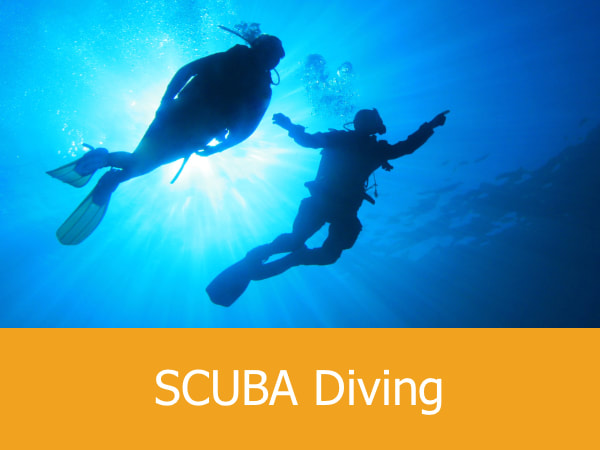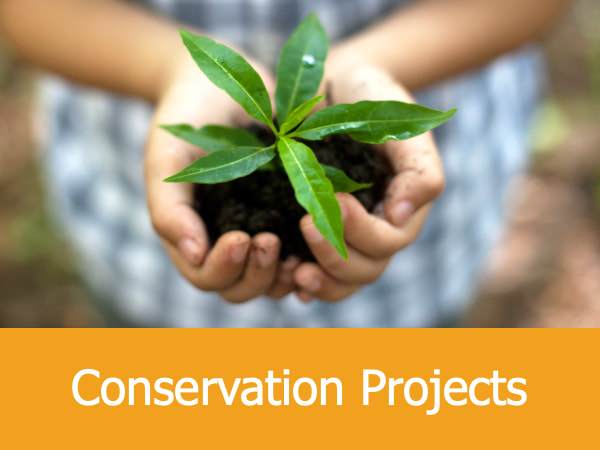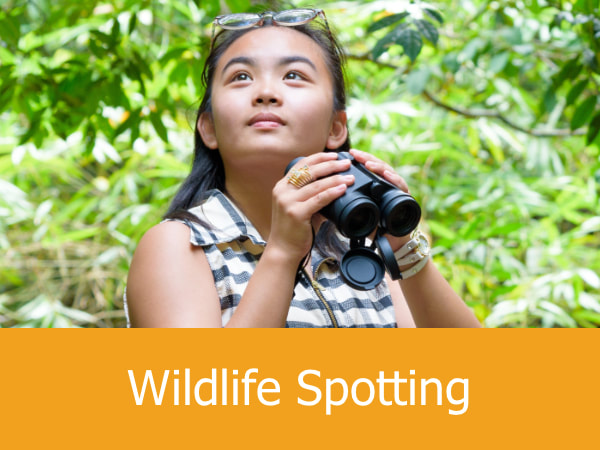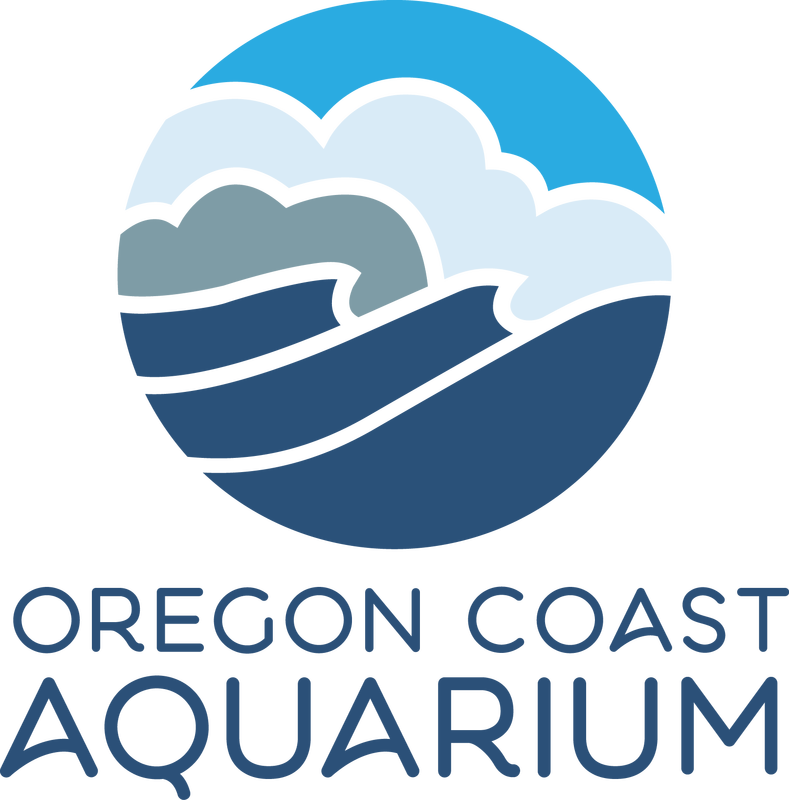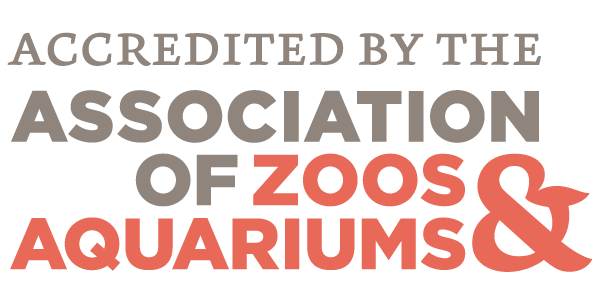Navigate:VIRTUAL EXPLORATIONS > ARCHIVED EXPLORATIONS > ELYSIUM ARTISTS FOR THE ARCTIC
|
Part 12: Updates for September 6Posted: Sunday, September 6, 2015
Sunday Morning: During the night, we left the pack ice behind and are once again near land in the northwest part of Svalbard (Norway). We have a much warmer air temperature here of 39.2 degrees Fehrenheit (4 degrees Celcius)! We have come to Vogeloya where divers will have the chance to dive a wall and the snorkelers have the option to snorkel there as well. The dry teams will have a zodiac cruise and maybe make a landing. This afternoon, wet teams will have the opportunity to dive again with the harbor seals at Virgohamna and dry teams will check out the beach at Smeerenburg where the walruses haul out. We saw a few in the shallow water there last time and we are hoping to see many of them hauled out on the beach this time. As I write this, I can hear (and feel) that the ship’s anchor is being lowered. It’s time for breakfast and then to get warmly dressed to go for our excursion! And here are just a couple of Global Positioning System (GPS) points for reference since we were still out in the middle of the ocean yesterday. The GPS points are in decimal degrees, so if you want them in degrees, minutes, and seconds, you can do a web search for a “calculator” that will convert them. Time, Latitude, Longitude, Note: 1:08 p.m., 81 28.044’ N, 16 41.819’ E 5:31 p.m., 81 24.791’ N, 16 13.604’ E, we were well on our way back to land at this point (Notes: We are still on Longyearbyen, Svalbard time zone. The first two numbers of each latitude and longitude number are the degrees – I wasn’t sure if I inserted the degree symbol if it would translate to different fonts, so I left it out.) |
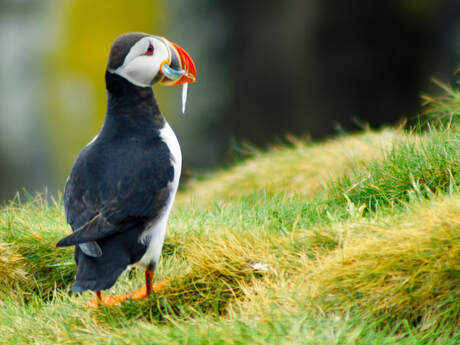
Sunday Afternoon:
The grandeur of the Svitjodbreen glacier on Fugle Fjord — is breathtaking! Calm water, no wind and balmy — well, balmy for the Arctic. 42.8 degrees Fahrenheit or 6 degrees Celcius! We didn’t even don our gloves, which made for feverish picture taking when a couple of puffins were spotted. These birds by now should have migrated but these two decided to hang in a little longer. A mother walrus and her pup were the only large inhabitants in the fjord (bay) but they gave us many photo opportunities with their loving attention to each other on their tiny ice floe. Frequently the glacier thundered as the ice calved off and fell into the ocean. You have to wonder if this is happening at an increasing rate or is it just natural? There is no sea ice (only glacier ice) here – how could there be at 6 degrees? That’s how cold it gets in Melbourne Australia during winter. Dr. Sylvia Earle dived with magnificent jellyfish, anemones, sponges, crabs — all living amongst the magnificent kelp that grows thick in this area. She had such a wonderful time, as she always does in the water.
The grandeur of the Svitjodbreen glacier on Fugle Fjord — is breathtaking! Calm water, no wind and balmy — well, balmy for the Arctic. 42.8 degrees Fahrenheit or 6 degrees Celcius! We didn’t even don our gloves, which made for feverish picture taking when a couple of puffins were spotted. These birds by now should have migrated but these two decided to hang in a little longer. A mother walrus and her pup were the only large inhabitants in the fjord (bay) but they gave us many photo opportunities with their loving attention to each other on their tiny ice floe. Frequently the glacier thundered as the ice calved off and fell into the ocean. You have to wonder if this is happening at an increasing rate or is it just natural? There is no sea ice (only glacier ice) here – how could there be at 6 degrees? That’s how cold it gets in Melbourne Australia during winter. Dr. Sylvia Earle dived with magnificent jellyfish, anemones, sponges, crabs — all living amongst the magnificent kelp that grows thick in this area. She had such a wonderful time, as she always does in the water.

